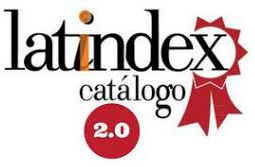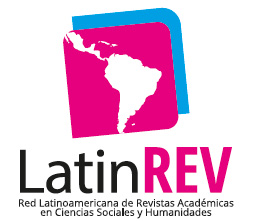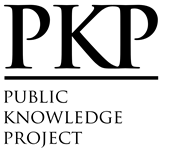Audience behaviour and multiplatform strategies
The path towards connected TV in Spain
Abstract
The convergence of television and the internet is profoundly changing the audio-visual market. Connected TV is offered through a wide range of internet-enabled devices. Taking audience perspective into account, the aim of this article is to describe television companies’ strategies for their multiplatform portfolios and the impact that this new context has on traditional pay television companies. The main data sources are professional reports, case studies, and an original online survey carried out in Spain.
Downloads
References
Accenture (2012). Bringing TV to life. Issue III: TV is all around you. Chicago: Accenture. AGF/GFK (2012). Das AGF/GfK Fernsehpanel. Retrieved from: http://www.agf.de/
Baldwin, T. F.; McVoy, D. S. & Steinfield, C. (1996). Convergence: integrating media, information & communication. Thousand Oaks, CA: Sage.
Barwise, P. & Picard, R. G. (2012). The economics of television in a digital world: what economics tell us for future policy debates. Oxford: Reuters Institute for the Study of Journalism.
Burt, R. S. (2005). Brokerage and closure: an introduction to social capital. Oxford: Oxford University Press.
Chan-Olmsted, S. M. (2003). Fundamental issues and trends in media strategy research. Journal of Media Economics & Culture, 2, p. 9-35.
Chan-Olmsted, S. M. & Kang, J.-W. (2003). Theorizing the strategic architecture of a broadband television industry. Journal of Media Economics, 16 (1), p. 3-21.
Chan-Olmsted, S. M. & Li, C. C. (2002). Strategic competition in the multichannel video programming market: an intra-industry strategic group analysis. Journal of Media Economics, 15 (3), p. 153-174.
Chan-Olmsted, S; Lee, S. & Kim, H. (2011). Competitive strategies in Korean mobile television markets: a comparative analysis of mobile operators and television broadcasters. International Journal on Media Management, 6 (1), p. 77-93.
CMT (2013). Memoria económica sectorial. Madrid: CMT. http://informecmt.cmt.es/docs/Informe%20Economico%20Sectorial%202012.pdf [accessed: December 2nd, 2014].
Deloitte (2011). Perspectives on television in words and numbers. Retrieved from: http://www.deloitte.com
Diego, P.; Guerrero, E. & Etayo, C. (2014). Televisión conectada en España: contenidos, pantallas y hábitos de visionado. Revista Mediterránea de Comunicación, 5 (1), p. 179-199.
Doyle, G. (2010). From television to multi-platform: less from more or more for less? International Journal of Research into New Media Technologies, 16 (4), p. 431-449.
Ellison, N.; Steinfield, C. & Lampe, C. (2010). Connection strategies: social capital implications of Facebook-enabled communication practices. New Media & Society, 13 (6), p. 873-892.
European Commission (2013). Preparing for a fully converged audiovisual world: growth, creation and values. Brussels, 24.4.2013, COM (2013) 231 final. http://eur-le1.europa.eu
Guerrero, E.; Diego, P. & Pardo, A. (2013). Distributing audiovisual contents in the new digital scenario: multiplatform strategies of the main Spanish television networks (p. 349-374). In: Friedrichsen, M.; Mühl-Benninghaus, W. (eds.). Handbook of social media management: value chain and business in changing media markets. Berlin: Springer.
Hayes, J.; Graybeal, G. (2011). Synerging traditional media and the social web for monetization: a modified media micropayment model. Journal of Media Business Studies, 8 (2), p. 19-44.
Herrero, M. (2003). Programming and direct viewer payment for television. Pamplona: Media Markets Monographs.
Herrero, M. (2009). The economics of series of audiovisual entertainment products (p. 31-52). In: Medina, M. (ed.). Creating, producing and selling TV shows. The case of the most popular dramedies in Spain. Lisbon: Formal Press/Media XXI.
Internet Advertising Bureau (2013). I Estudio Annual IAB Spain. TV conectada y video online: informe de resultados octubre 2013. Retrieved from: http://www.slideshare.net/IAB_Spain/ primer-estudio-de-tv-conectada-y-vdeo-online [accessed: December 2nd, 2014].
Jakubowicz, K. (2007). Public service broadcasting in the 21st Century: what chance for a new beginning?” (p. 29-50). In: Lowe, G.; Bardoel, J. (ed.) From public service broadcasting to public service media. Göteborg: Nordicom.
Jin, D. Y. (2012). The new-wave of de-convergence: a new business model of the communication industry in the 21 century. Media, Culture and Society, 34 (6), p. 761-772.
Kachaner, N. & Deimler (2008). How leading companies are stretching their strategy, Strategy and Leadership, 36 (4), p. 40-43.
Küng, L. (2004). Creativity and leadership in media firms (p. 463-480). In: Salaverria R.; Sádaba, C. (eds.). Towards new media paradigms. Pamplona: Ediciones Eunate.
Küng, L. (2008). Strategic management in the media: theory to practice. Thousand Oakes: Sage.
Lawson-Borders, G. (2003). Integrating new media and old media: seven observations of convergence as a strategy for best practices in media organizations. International Journal on Media Management, 5 (2), p. 91-99.
Lawson-Borders, G. (2005). Media organizations and convergence: case studies of media convergence pioneers. Mahwah: Lawrence Erlbaum Associates.
Levin, J. (2009). An industry perspective: calibrating the velocity of change (p. 256-263). In: Holt, J.; Perren, A. (eds.). Media industries: history, theory, and method. Oxford: Wiley-Blackwell.
Martínez, S. & Mena, S. (2013). Televisión en internet: introducción y prognosis de una revolución en el mercado audiovisual. Ámbitos, 22. Retrieved from: http://ambitoscomunicacion.com/2013/ television-en-internet-introduccion-y-prognosis-de-una-revolucion-en-el-mercado-audiovisual/ [accessed: December 2nd, 2014].
Medina, M. & Prario, B. (2013). The transformation of audiovisual media companies: the cases of Mediaset (Italy) and Antena 3 (Spain). Studies in Communication Sciences, 13 (2), p. 166-173.
Medina, M.; Ojer, T. (2011). The transformation of public TV companies into digital services at the BBC and RTVE. Comunicar, 36, p. 87-94.
Medina, M. et al. (2011). Implementation of innovation strategy: the case of CCRTV interactiva (p. 87-118). In: Vukanovic, Z. & Faustino, P. (eds.). Managing media economy, media content and technology in the age of digital convergence. Lisbon: Media XXI.
Micó, J.; Masip, P. & Barbosa, S. (2009). Models of business convergence in the information industry. Brazilian Journalism Research, 5 (1), p. 123-140.
Oliver, J. (2009). Making media strategy in times of uncertainty. EMMA Annual Conference, Paris, February 13-14. OJD Interactiva (2013). Auditoría de medios online.
Ostelwalder, A. (2010). Business model generation: a handbook for visioners, game changers and challengers. Hobeoken, NJ: Wiley.
Palmer, S. (2006). Television disrupted: the transition from network to networked TV. Boston: Focal Press.
Picard, R. (2009). Blogs, tweets, social media, and the news business. Nieman Reports, Fall, 10-12.
Picard, R. (2011). Mapping digital media: digitization and media business models. Open Society Media Program, 5.
Sangrador, A. (2013). Digital manager of Atresmedia Advertising, e-mail, 11/19/2013.
Waterman, D.; Sherman, R. & Wook Ji, S. (2013). The economics of online television: industry development, aggregation, and “TV Everywhere”. Telecommunications Policy, 37, p. 725-736.
Waterman, D.; Sherman, R. & Wook Ji, S. (2012). The economics of online television: revenue models, aggregation, and “TV Everywhere”, working paper, The Digital Media and New Media Platforms: Policy and Marketing Strategies Conference, National Chengchi University, Taipei, Taiwan, March 29, 2012. Retrieved from: http://www.indiana.edu/~telecom/people/faculty/waterman/Economics%20of%20online%20TV.pdf [accessed: December 2nd, 2014].
Wildman, S. (2008). Interactive channels and the challenge of content budgeting. International Journal on Media Management, 10 (3), p. 91-101.
Copyright (c) 2015 Mercedes Medina, Mónica Herrero, Enrique Guerrero

This work is licensed under a Creative Commons Attribution-NonCommercial 4.0 International License.
The authors retain the copyright and guarantee the journal the right to be the first publication of the work. In case that a translation of the article already published in Austral Comunicación can be published in another journal, it is requested to record the original publication in the translated version.
The license used is CC BY-NC-SA, which allows sharing (copying and redistributing the material in any medium and format) and adapting (remixing, transforming and building on the material) under the following terms: attribution (acknowledge authorship) and non-commercial (the material cannot be used for commercial purposes). Update: February 1, 2022.
Austral Comunicación allows the author (s) to retain the publication rights without restrictions.











































